Peru, a country steeped in ancient history and mystical allure, boasts some of the world’s most captivating archaeological sites. From the iconic Machu Picchu to lesser-known gems, the richness of Peru’s past comes alive through its remains. Here’s a guide to Peru’s top archaeological sites that promise a journey through time.
Peru’s archaeological wonders beckon with tales of ancient civilizations. From the iconic Machu Picchu, a testament to Incan ingenuity, to the mysterious Nazca Lines etched in the desert, each site tells a story. Explore Cusco’s Incan capital, the adobe city of Chan Chan, and the living town of Ollantaytambo. Peru’s history unfolds in the remains.
Undoubtedly the crown jewel of Peruvian archaeology, Machu Picchu is an ancient Incan citadel perched on a mountain ridge. Its perfectly crafted stone structures, astronomical observatories, and agricultural terraces tell the story of an advanced civilization. A trek through the Andes to witness the sunrise over Machu Picchu is a bucket-list experience.
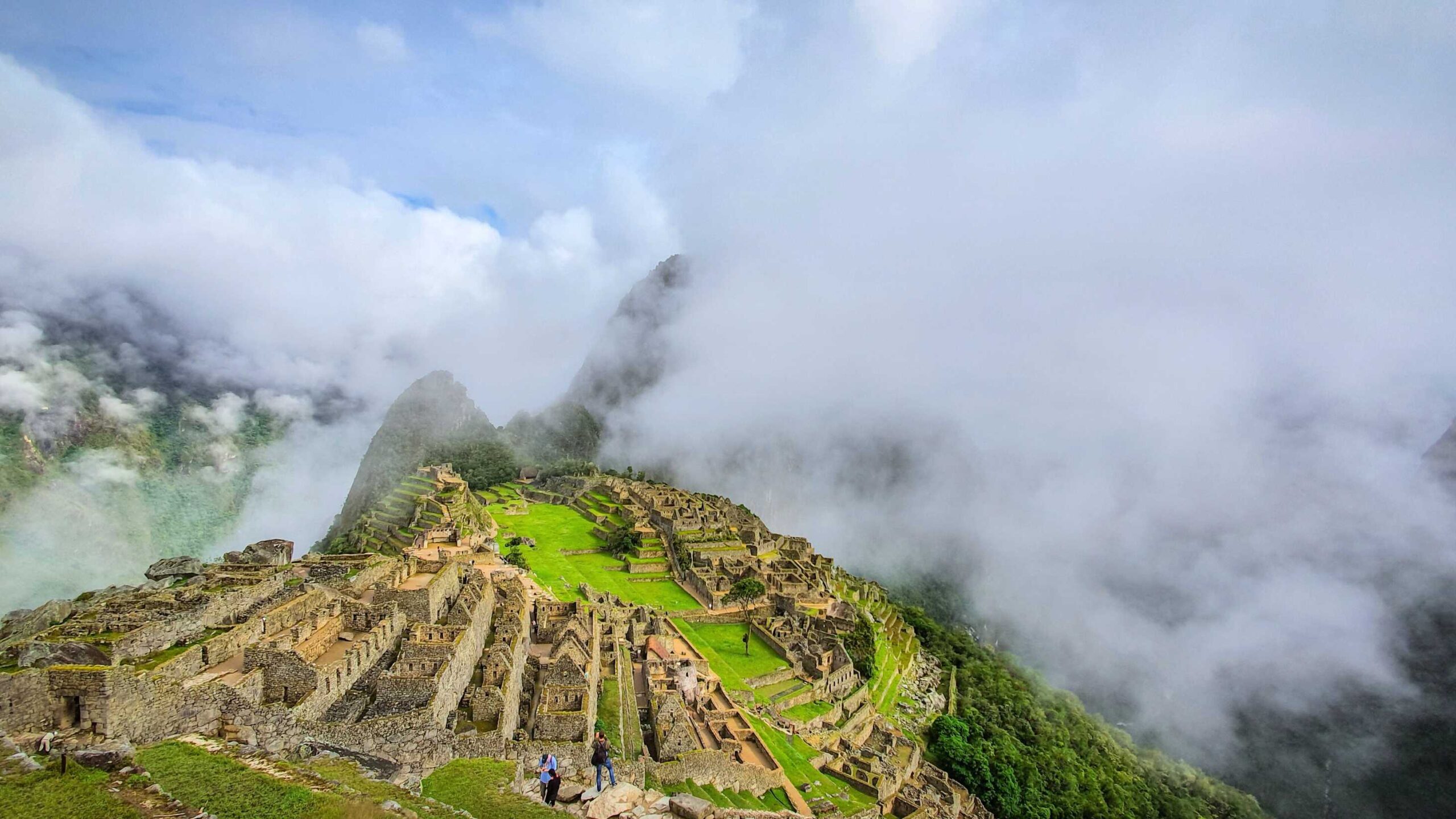
Perched atop a mist-shrouded Andean peak, Machu Picchu, often hailed as the “Lost City of the Incas,” is an archaeological marvel that defies both explanation and imagination. Its intricate stonework, celestial observatories, and agricultural terraces unfold the advanced knowledge of the ancient Incan civilization.
As the morning sun bathes these ancient stones, Machu Picchu reveals itself as not just a historical relic but a living testament to human ingenuity and connection to the cosmos. The spiritual energy that permeates this citadel is as palpable as the breathtaking views it commands. Machu Picchu, the enigmatic crown jewel, stands not merely as a destination but as a profound journey through time.
Once the capital of the Inca Empire, Cusco is a living testament to the architectural brilliance of the Incas. The impressive stone walls of Sacsayhuamán, the sacred Qoricancha, and the intricate stonework of Coricancha are just a glimpse of Cusco’s archaeological wonders.
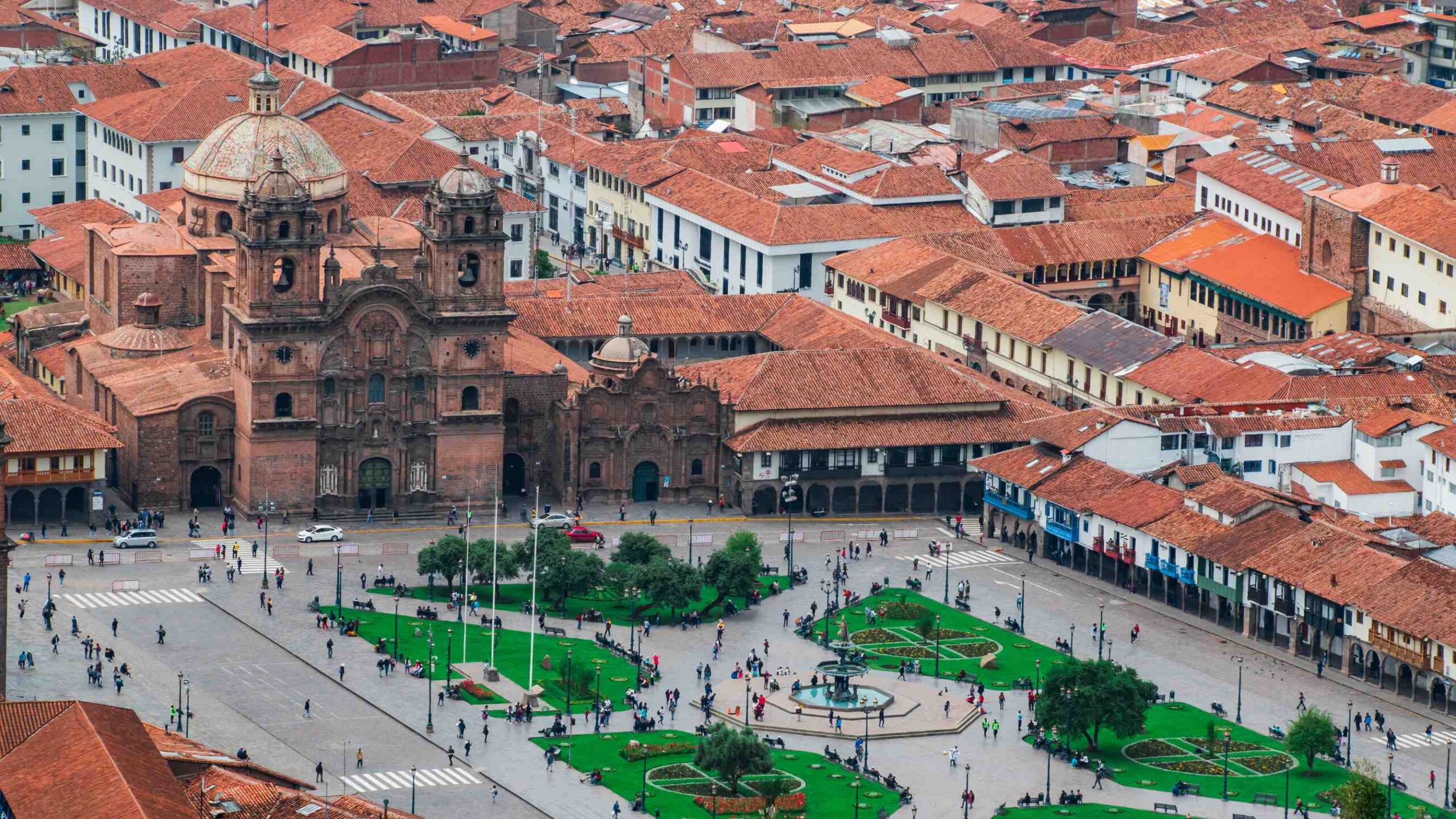
Cusco, the heart of the Inca Empire, stands as a living testament to the architectural and cultural brilliance of its past. Nestled in the Andes, this city served as the epicenter of Incan governance, adorned with awe-inspiring structures. The colossal stone walls of Sacsayhuamán, the sacred Qoricancha with its golden walls, and the intricate stonework of Coricancha showcase the advanced engineering and spiritual significance of Incan civilization.
As you wander through Cusco’s narrow cobblestone streets, you’re immersed in a blend of ancient history and vibrant modern culture, making it an essential stop on any journey through Peru’s archaeological wonders.
On the northern coast, the ancient city of Chan Chan stands as the largest adobe city in the world. The intricate carvings on its walls depict a once-thriving metropolis and the Chimu civilization’s mastery of urban planning.
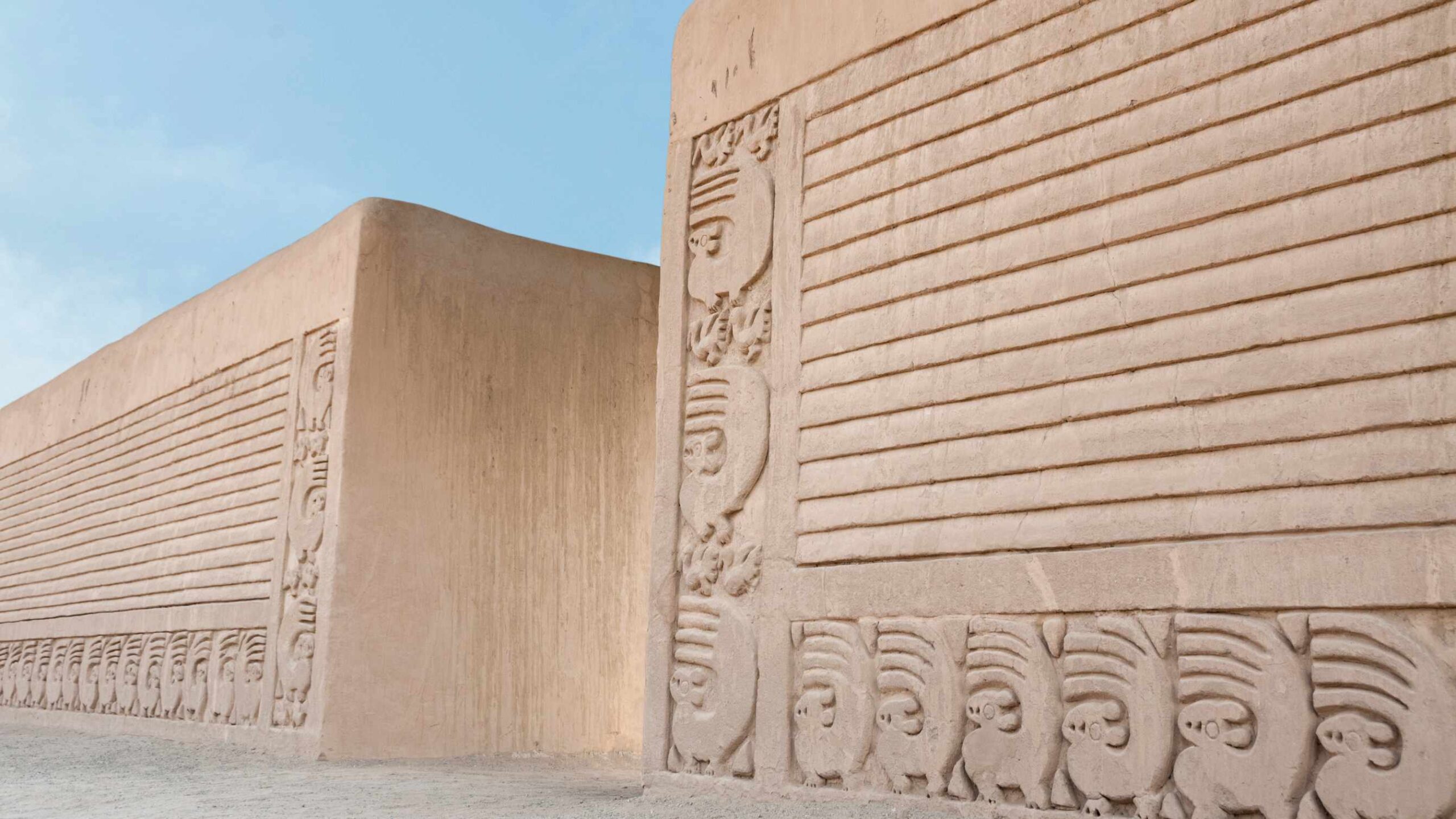
Nestled on Peru’s northern coast, Chan Chan stands as a testament to the architectural and artistic prowess of the Chimu civilization. Flourishing between the 9th and 15th centuries, Chan Chan is the largest adobe city globally, comprising nine vast citadels, ceremonial plazas, and intricate passageways. Its adobe walls, adorned with geometric designs and stylized creatures, reflect a sophisticated urban center, offering a captivating glimpse into Chimu culture and engineering brilliance.
The citadel’s preservation challenges due to its vulnerability to climate conditions underscore the ongoing efforts in conservation. Chan Chan is a window into pre-Columbian urbanism, where adobe bricks and artistic expression converged to create a city that stands as a remarkable testament to ancient Peruvian civilization. Visit Chan Chan, and you’ll traverse the corridors of time, exploring the legacy of a civilization that once thrived against the backdrop of the Peruvian desert.
Etched into the Nazca Desert, the Nazca Lines are colossal geoglyphs that baffle archaeologists and intrigue travelers. The purpose behind these gigantic drawings of animals and geometric shapes remains a mystery, adding an element of mysticism to this archaeological marvel.
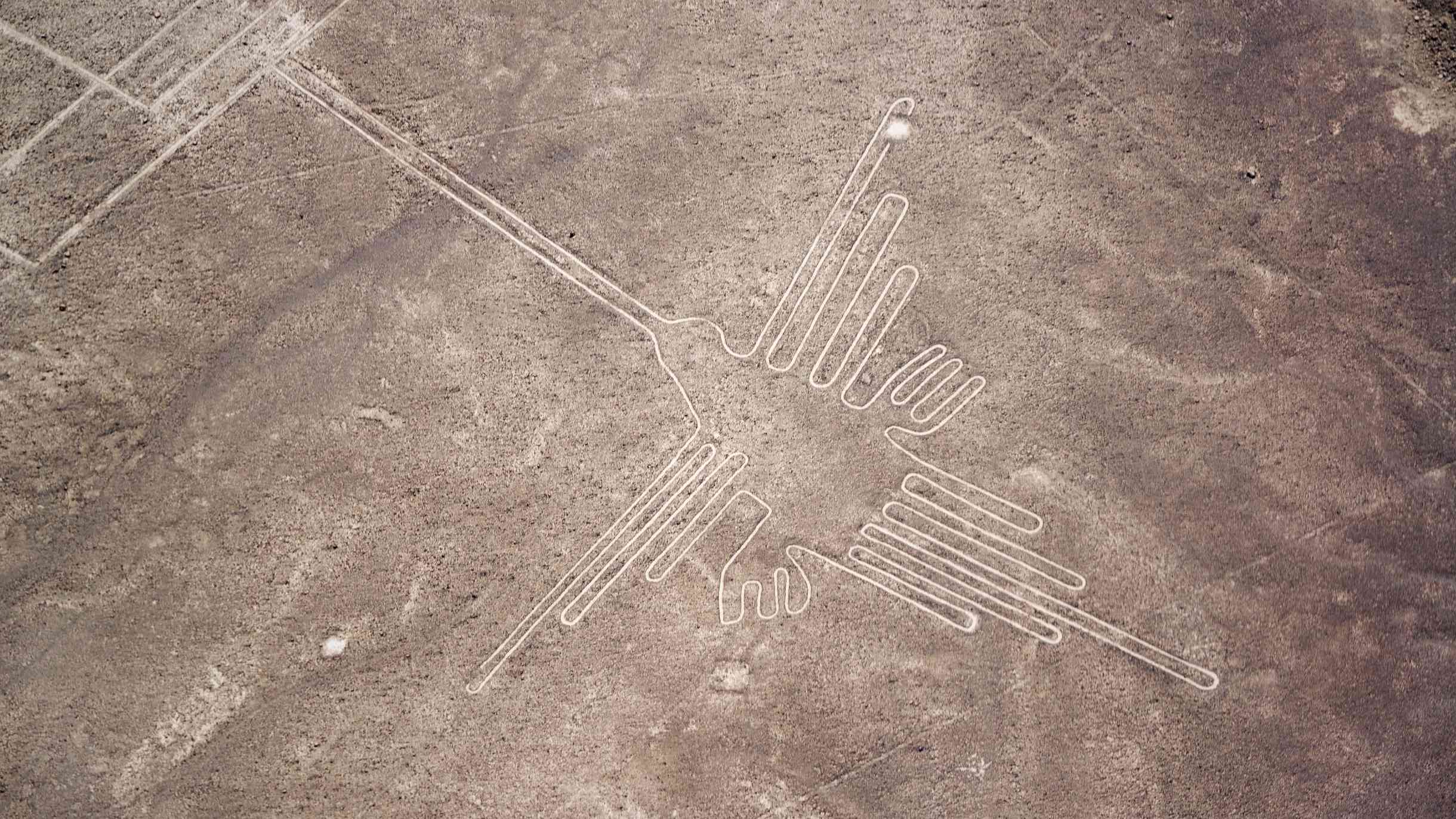
What sets the Nazca Lines apart is not just their quantity but the precision with which they were created. Engraved into the reddish-brown iron oxide-coated pebbles that cover the surface of the Nazca Desert, these lines and figures were made by removing these iron oxide-coated rocks to reveal the light-colored earth beneath. The lines, in particular, stretch for miles with widths ranging from 30 to 40 centimeters. The precision and scale of the geoglyphs become fully apparent only when viewed from the air.
The real mystery deepens when one considers that the Nazca people, who lacked advanced technology and the means to see their creations from above, somehow engineered these intricate designs with such accuracy. Some researchers believe that simple tools, such as wooden stakes and strings, might have been used in the creation of the Nazca Lines, but the true methods remain speculative.
Visitors today can experience the Nazca Lines by taking to the skies. Numerous small aircraft offer aerial tours, providing a breathtaking perspective of the sprawling geoglyphs. The patterns and figures, when seen from above, evoke a sense of awe and admiration for the ancient people who crafted them.
Nestled within the emerald embrace of the Sacred Valley, Ollantaytambo stands not only as an archaeological marvel but as a living testament to the endurance of Incan traditions. This charming town, with its cobbled streets and ancient stone structures, offers visitors a unique and immersive experience into the heart of Incan culture.
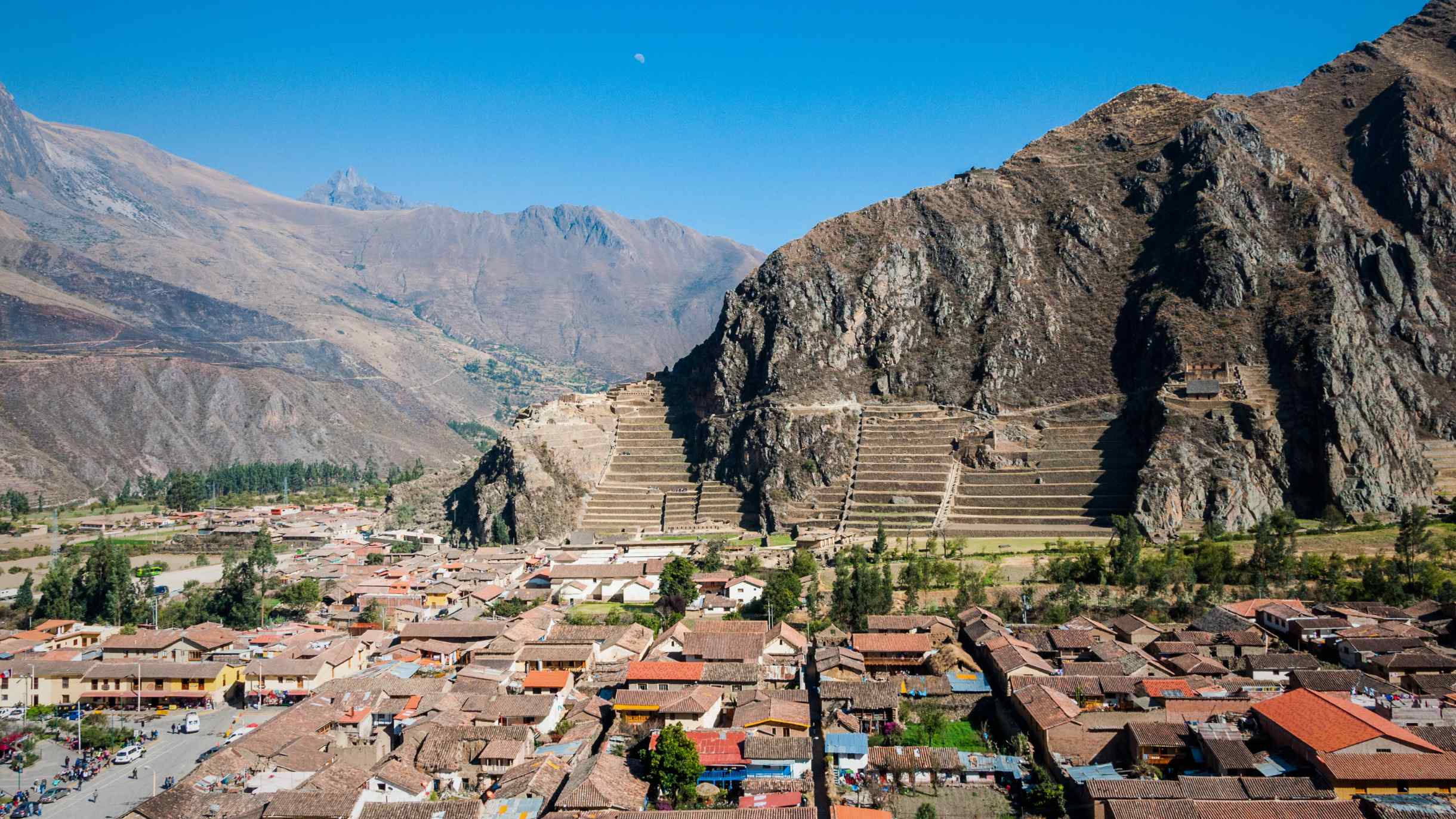
Surrounded by the towering peaks of the Andes and kissed by the gentle flow of the Urubamba River, Ollantaytambo radiates a serene energy. Travelers find themselves enchanted not just by the ancient stones but by the palpable connection between the town, the land, and its people.
In Ollantaytambo, time seems to dance between the ancient and the contemporary, creating an atmosphere where the echoes of the Incan past harmonize with the vibrant pulse of a living, breathing town. It’s a place where history is not confined to textbooks but is woven into the very fabric of daily life.
Ollantaytambo’s archaeological site is a treasure trove of Incan ingenuity. Towering terraces climb the steep hillsides, showcasing the agricultural prowess of a civilization that mastered the art of cultivating crops in challenging terrain. The Temple Hill, with its ceremonial platforms and intricate stonework, provides a glimpse into the spiritual and religious practices of the Incas.
What sets Ollantaytambo apart is not just its ruins but the fact that the town itself is a living continuation of Incan urban planning. The layout of the town has remained remarkably consistent with its original design. Narrow cobblestone streets run between buildings constructed with the same precision and techniques as the Incan structures of old.
In the heart of modern Lima, where the bustling cityscape meets echoes of a distant past, stands Huaca Pucllana—an ancient pyramid that serves as a captivating testament to Lima’s pre-Incan history. This archaeological site, built by the Lima culture, predates the Inca Empire and offers a fascinating glimpse into the rich tapestry of Peru’s ancient civilizations.
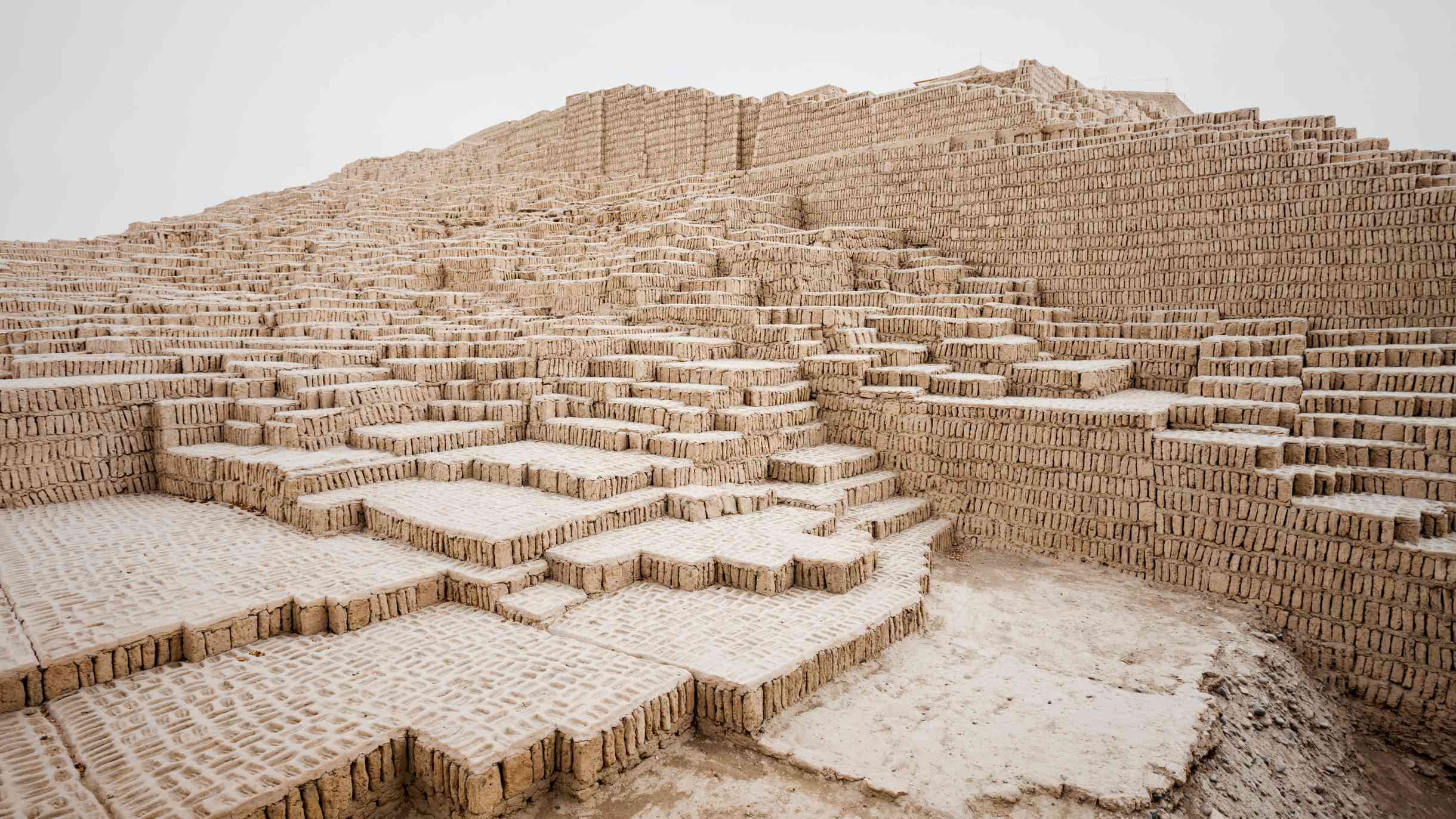
Huaca Pucllana is a sprawling adobe and clay pyramid complex that once served as a ceremonial and administrative center. The site’s architectural ingenuity is evident in its meticulously crafted stepped platforms, plazas, and structures. The adobe bricks, made from a mixture of clay and straw, have withstood centuries, providing a tangible link to Lima’s pre-Columbian heritage.
What makes Huaca Pucllana particularly unique is its juxtaposition with the modern city. Surrounded by the bustling neighborhoods of Miraflores, this ancient pyramid serves as a striking contrast to the contemporary high-rises and urban sprawl. The integration of this archaeological treasure within the fabric of Lima showcases the city’s commitment to preserving its historical roots.
Today, Huaca Pucllana is open to the public, inviting visitors to step into the world of ancient Lima. Guided tours provide historical context, detailing the significance of various structures and the cultural practices that once animated the site. The panoramic view from the top of the pyramid offers a unique perspective of both ancient and contemporary Lima.
High in the cloud forest of northern Peru, shrouded in mist and surrounded by lush greenery, lies the majestic fortress of Kuelap. Often referred to as the “Machu Picchu of the North,” Kuelap is a testament to the advanced engineering and architectural prowess of the Chachapoya civilization.
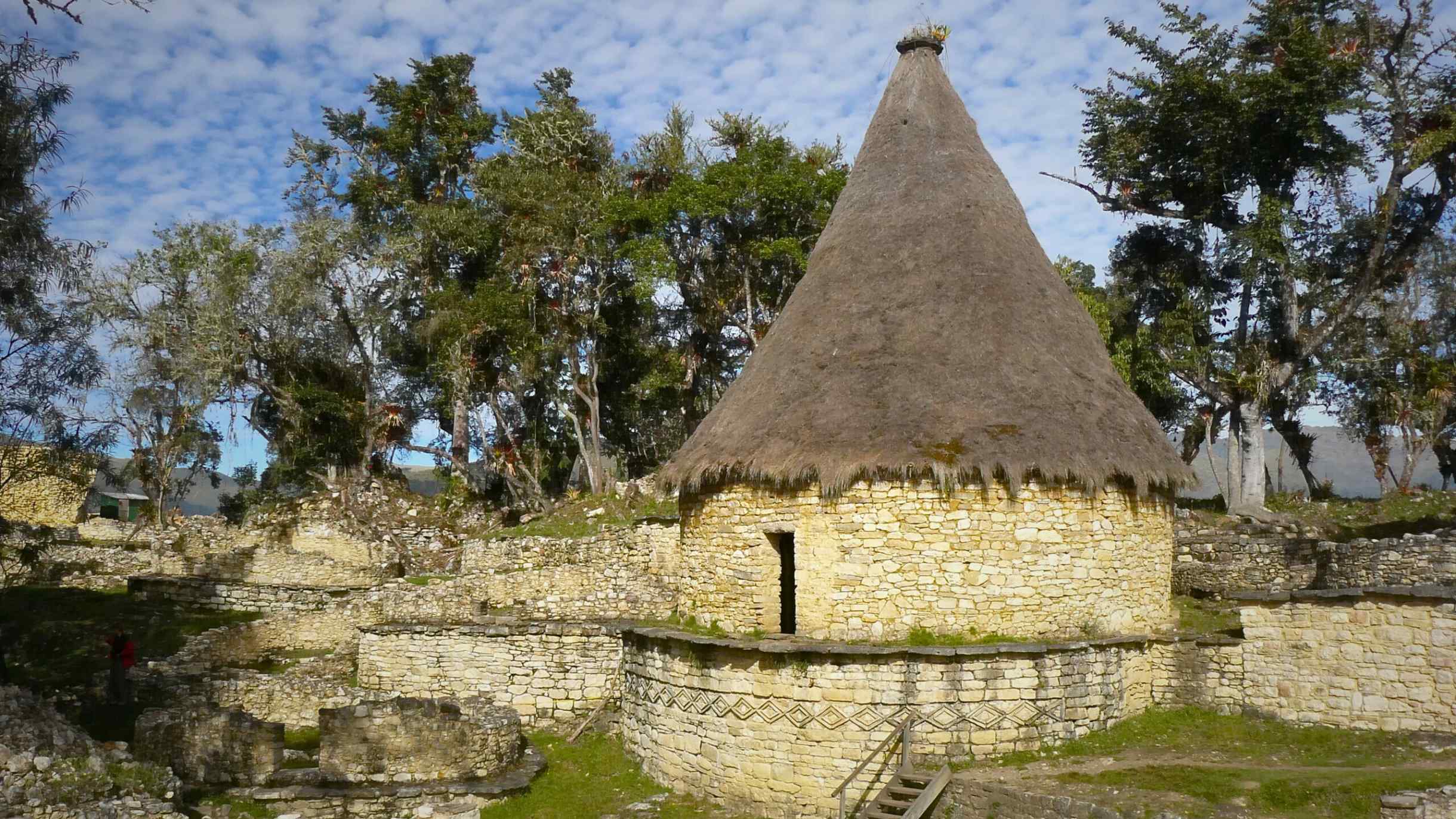
Built between the 6th and 16th centuries, Kuelap is a massive fortress encircled by towering stone walls, some reaching up to 20 meters in height. The outer walls are adorned with intricate carvings, and the site contains more than 400 circular structures, believed to be homes, temples, and storage facilities.
What sets Kuelap apart is its extensive use of circular architecture, a departure from the more common rectangular structures found in other ancient civilizations. The circular buildings, coupled with the fortress’s scale and strategic positioning, suggest a complex understanding of defense and urban planning.
While Machu Picchu draws throngs of visitors, Kuelap offers a more secluded and serene experience. The journey to Kuelap involves a scenic drive and a cable car ride, providing panoramic views of the surrounding landscape. Exploring the site allows visitors to wander through ancient streets, admire the well-preserved structures, and contemplate the mysteries that still surround this archaeological gem.
Exploring Peru’s archaeological wonders is like stepping back in time, where each site whispers tales of ancient civilizations. Whether you’re drawn to the majesty of Machu Picchu or the enigmatic Nazca Lines, Peru’s archaeological treasures promise an unforgettable journey through history.